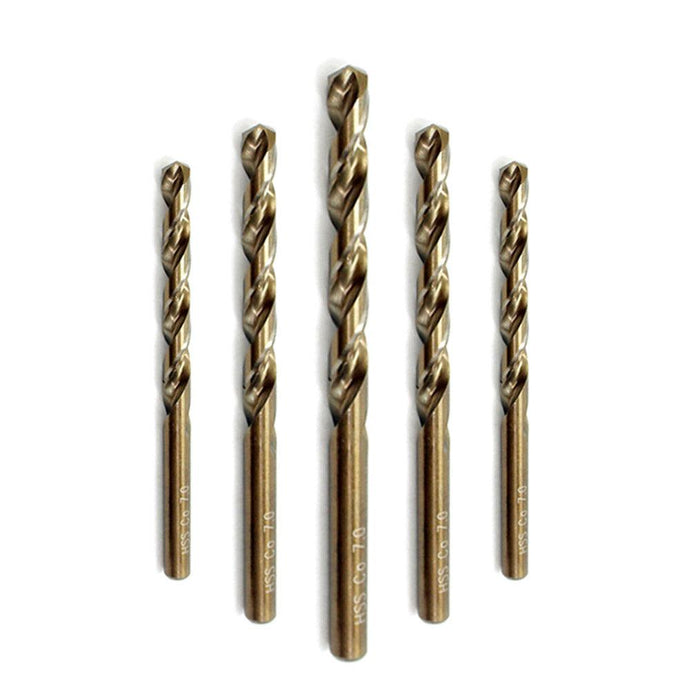|
|
Mastering the Art of Drilling: Best Practices with a Twist Drill
Twist drills are essential tools for professionals and hobbyists alike, providing the precision and power needed to drill holes in a wide range of materials such as metal, wood, plastic, and composites. However, achieving clean, accurate holes requires more than just selecting the correct drill bit. To get the most out of a twist drill, it is crucial to follow best practices that ensure both the quality of the hole and the longevity of the tool. These practices involve choosing the right speed, applying the correct pressure, and maintaining proper technique throughout the drilling process.
One of the most important aspects of using a twist drill effectively is selecting the right speed for the material. Drilling too quickly can cause overheating, leading to dulling of the drill bit and potentially damaging the material. On the other hand, drilling too slowly may result in a rough, uneven hole and put unnecessary strain on the bit. As a general rule, softer materials like wood and plastic can be drilled at higher speeds, while harder materials like steel, cast iron, or stainless steel require slower speeds. Many drills come with adjustable speed settings, allowing users to control the rotation per minute (RPM) based on the material at hand. For example, drilling wood might require 3000 RPM, while drilling metal should be done at speeds closer to 500-1000 RPM, depending on the hardness.
In addition to controlling the speed, applying the correct amount of pressure is vital. Excessive pressure can cause the drill bit to overheat, damage the material, or even break the bit. Conversely, too little pressure may lead to poor cutting performance, causing the bit to skate across the surface rather than bite into it. The goal is to apply just enough pressure to let the drill bit do the work without forcing it. The right pressure ensures efficient chip removal while reducing heat buildup. If you notice smoke, excessive heat, or a burning smell, it's a sign that too much pressure is being applied or the speed is too high.
Lubrication is another key factor in preserving the life of the twist drill and ensuring smooth, effective drilling. When drilling metals, particularly harder ones like steel, using a cutting fluid or lubricant can significantly reduce friction and heat. The lubricant cools the bit and material, preventing overheating and ensuring that the drill bit maintains its sharpness for longer. While not always necessary for softer materials like wood or plastic, lubrication is a must when working with metal, particularly in high-speed or deep drilling applications. Common lubricants for metal drilling include machine oils, cutting oils, and even specialized pastes that help cool and lubricate the cutting edges.
Ensuring proper alignment is also essential when drilling with a twist drill. Misalignment can lead to inaccurate holes, bit breakage, or even injury. Before drilling, it's important to mark the exact spot where the hole should be made using a center punch or an awl. This helps to prevent the drill bit from wandering or slipping off the mark, especially on smooth or hard surfaces. Starting with a smaller pilot hole can also help guide the larger twist drill bit into position and ensure a straighter, more precise hole. This is particularly useful when drilling in metal, where bit wandering can lead to significant inaccuracies.
Maintaining the sharpness of the twist drill bit is critical for optimal performance. A dull bit will not only make drilling more difficult, but it can also damage the material and cause the bit to overheat. Regularly inspecting the bit for signs of wear, such as chipped edges or rounded tips, is important. If the bit is dull, sharpening it with a bench grinder or a dedicated bit sharpener can restore its cutting efficiency. For those who frequently drill metals, investing in high-quality, durable twist drills made from materials like cobalt or carbide can also help reduce wear and extend the lifespan of the tool.
For deep-hole drilling, periodically clearing chips and debris from the hole is essential. As the twist drill removes material, chips can accumulate in the flutes, reducing cutting efficiency and potentially leading to clogs or overheating. Backing out the drill periodically to remove chips and allow the bit to cool helps maintain steady progress and prevents damage to both the bit and the material. This practice is especially important when drilling in metal or dense materials, where chips can build up quickly.
Finally, securing the workpiece properly is a fundamental best practice when drilling. Whether you're working with wood, metal, or plastic, ensuring that the material is firmly clamped or held in place prevents movement, which can lead to inaccuracies or even accidents. For larger or thicker materials, using a vise or clamps to hold the workpiece steady is crucial. Movement during drilling can cause misalignment or uneven holes, making it difficult to achieve a clean result. In handheld drilling, making sure that both the drill and the material are stable will ensure better control and precision.
By following these best practices, you can achieve cleaner, more precise holes while extending the life of your twist drill. From choosing the right speed and pressure to using proper lubrication and sharpening techniques, mastering these essential tips will ensure that your drilling projects are not only successful but also efficient. Whether you're drilling through wood, metal, or plastic, careful attention to technique can make all the difference in the quality and durability of your work. |

|